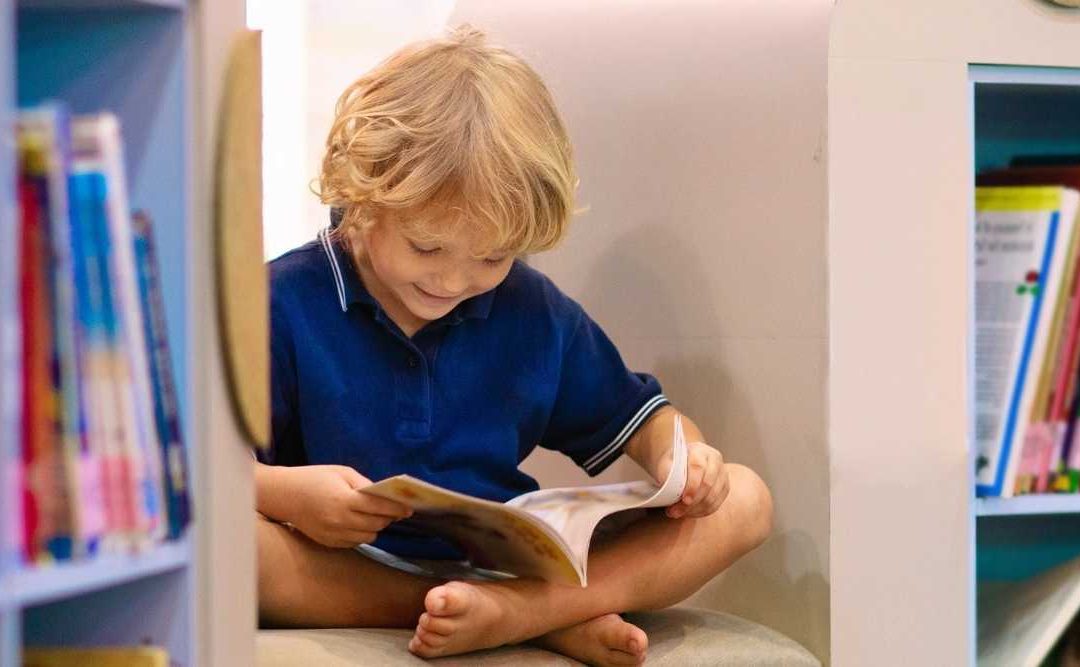Surround your child with books: a strategy in itself
As a new parent I was excited to personally put into practice strategies that I had been discussing with families for years regarding ways to foster language development in littlies. One of these was the importance of reading books with your child every day. Here are five of the things that I found to be helpful and effective in achieving this:
1. Start them young
This sounds obvious, but fostering a love of books in young ones can be made easy when reading daily is all they have ever known. I have fond memories of sitting my kids into the crease of the couch before they could even sit independently so that they could hold and look at books themselves, as well as them snuggling in to read with me. There are many great cloth books without words that allow you to tell your own story with your child and make it different each time.
2. Make sure books are ‘everywhere you look’!
An idea I had was to make sure that I had books for my kids in every single room of the house. Hence the title to this blog….thanks to Justine Clarke’s great song for the title inspiration. I did a stock up on cheap baskets and reading stands so that there was a basket of books in the lounge room, as well as a box for library books, a bookshelf in the bedroom, a book stand in the bathroom (keeping a child on the toilet with books was a successful early toilet training strategy in our house!), a box of books next to a calming reading corner in the playroom, and even books in the kitchen to keep them eating their dinner.
3. Utilise your local library as much as possible
Your local library is such a great resource and full of an amazing range of both bestselling books and new titles. In addition they have great weekly story time groups that you can take kids to before they start kinder. We would go each week and borrow a bunch of books while there. Alternatively, we would do our monthly library visit and max out the number of books that can be borrowed to have a range of new titles on rotation in the home. In the interest of saving the environment and money, by making the most of the library, I found myself only buying books for them that I knew would be read over and over and over again.
4. Think about the types of books you make available
Wherever you source your books from, it helps to think about the types of books that you choose. By this I mean making sure you have books available that your child, regardless of their age, can ‘read’ to themselves. These will be at a different level of complexity to the books that you read to them.
5. Remember, it doesn’t have to be you doing the reading
Over the years talking to families, parents have often been honest that they struggle to find the time to read to their kids. A tip they find helpful to consider is that it doesn’t always have to be them doing the reading. Having a video call with the grandparents for them to read a story can be a great point of connection. Utilise audio books as much as you can – they make a fantastic alternative to ‘screen time’. Siblings can also do lots of ‘reading’ together, even before they are reading the words on the page.

